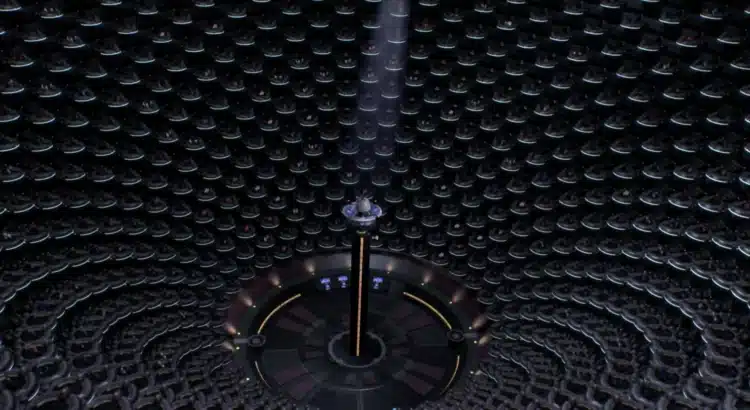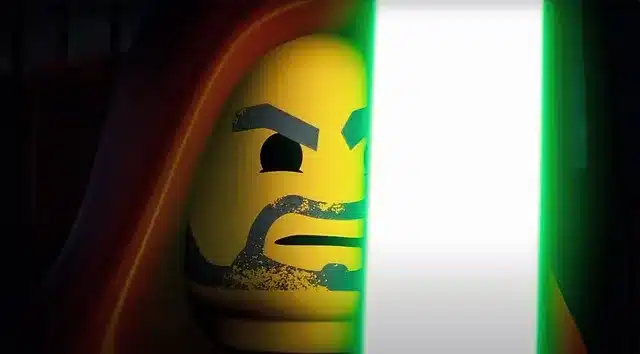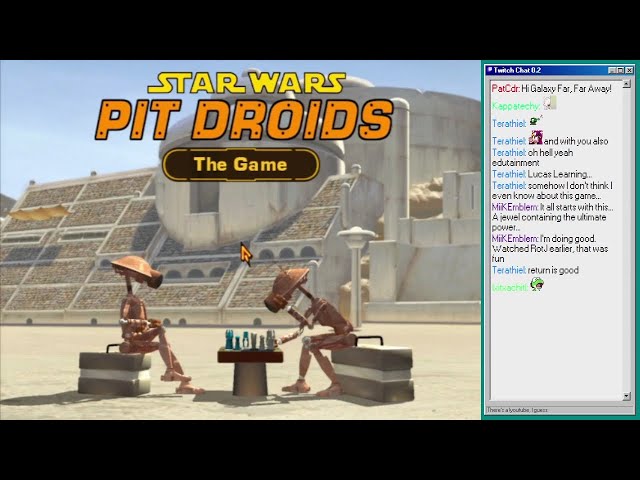The Galactic Senate in Star Wars is far more than just a fancy room filled with alien delegates and floating pods. It’s the political heart of the galaxy, where power is brokered, alliances are made, and, ultimately, democracy collapses. This article takes a deep dive into how the Senate operates, its inefficiencies, the corruption that rots its core, and the role it plays in the fall of the Republic and rise of the Empire.
TL;DR: The Galactic Senate, once the seat of democracy in Star Wars, becomes a stage for corruption, manipulation, and bureaucracy, leading to the Republic’s downfall and the rise of the Empire. By exploring its political intrigue, diversity, and inefficiencies, this article shows how these elements reflect real-world issues and the importance of political awareness.
Now, let’s dive deeper into the political mechanics of the Senate and how they contributed to the fall of the Republic.
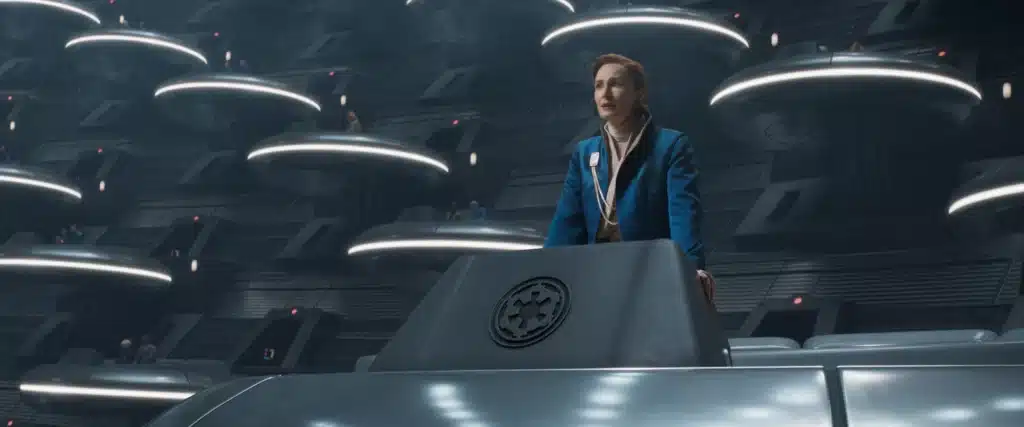
1. Overview of the Galactic Senate
When you think of the Galactic Senate, imagine the universe’s biggest, most chaotic town hall meeting, but instead of arguing about parking spots or school budgets, they’re debating the fate of entire star systems. This grand political body was created to maintain peace and order in the galaxy, though it often seemed like its real job was to showcase how difficult governing thousands of species with vastly different interests and hairstyles can be. Let’s dive into the history, structure, and purpose of this infamous governing body.
Historical Background
The Galactic Senate was established long before Anakin Skywalker could say “I hate sand,” serving as the Republic’s primary governing body for over 25,000 years. That’s a lot of committee meetings. It was designed to bring representatives from various star systems together in a grand effort to maintain peace and stability across the galaxy. And for a while, it worked—like a galactic group project where no one had to write passive-aggressive messages about someone not pulling their weight.
Initially, the Senate was a beacon of democracy. Each planet or system sent delegates to represent their interests, kind of like sending your most charming cousin to a family reunion to avoid any awkward political arguments. This structure was supposed to ensure that every part of the galaxy, big or small, had a say in the Republic’s decisions. But, as we’ll see, maintaining peace across a galaxy with thousands of planets isn’t as simple as finding a perfect balance between Jedi and Sith on a see-saw.
The Senate’s Role in Maintaining Peace and Order
In theory, the Senate was the galaxy’s legislative branch, working to maintain peace, order, and justice across the Republic. They passed laws, debated important issues, and worked to prevent the galaxy from descending into chaos—which is kind of like trying to stop a pack of wild Kowakian monkey-lizards from getting into a bakery. Sometimes they succeeded, but other times they were more like space politicians twiddling their thumbs while the galaxy slowly imploded around them.
But the Senate wasn’t just about legislative work. It was also where star systems could bring their grievances, whether it was about trade route disputes, interplanetary squabbles, or the occasional “this Sith Lord is acting a little too murder-y” issue. Ideally, the Senate would act as a mediator, resolving conflicts before they escalated into full-blown space wars. However, much like trying to convince a toddler that bedtime is a good idea, it didn’t always go smoothly.
As the Republic grew, so did the complexity of maintaining peace. The Senate’s ability to keep the galaxy in check started to buckle under the weight of its expanding responsibilities. What began as a noble attempt to ensure fair representation for all systems often turned into a sluggish, bureaucratic nightmare. That’s right—the Galactic Senate was just as susceptible to red tape and political gridlock as any Earth-based government, only with more species, planets, and awkward meetings with Jedi knights.
Structural Composition: A Circus of Star Systems
The Galactic Senate is kind of like a galactic version of the United Nations—except, you know, with floating pods and way more tentacles. Its members were representatives from thousands of different star systems and planets, all seated in a grand, circular chamber designed to make sure no one planet’s delegate had a better seat than anyone else (except maybe Naboo, who always seemed to score some prime real estate near the middle).
Each senator represented their home system, and this is where things got a bit tricky. Some systems were populous, wealthy, and politically powerful—like Coruscant, the galactic capital—while others were smaller, less influential backwaters that barely had enough of a tax base to fund a single podracer. Balancing these various interests was no easy task. Equal representation was a nice idea in theory, but in practice, the Senate often found itself dominated by wealthier systems with more to offer—or more to bribe with.
In the spirit of galactic fairness, each planet technically had a voice, but the louder planets (with fancier pod-tech and flashier robes) sometimes drowned out the quieter ones. The Senate chamber itself, with its grand architecture and floating repulsorlift platforms, was designed to be a symbol of unity. But if you squint a little, you could also see it as a visual metaphor for how disconnected and far-flung the galaxy’s representatives really were.
Function and Authority: What Can (and Can’t) the Senate Do?
The Galactic Senate wielded significant power—at least, on paper. It was responsible for passing laws, approving budgets, and keeping the galaxy running as smoothly as possible. However, much like the office coffee machine, it didn’t always work as intended.
The Senate had the authority to enact legislation that affected the entire Republic. They could levy taxes, regulate trade, and oversee military operations (which, as you can imagine, got a little dicey during wartime). But the Senate wasn’t all-powerful. They had to work within the bounds of the constitution of the Republic, which was designed to prevent anyone—cough Palpatine cough—from gaining too much control. Unfortunately, that little safeguard didn’t quite hold up when the Sith came knocking.
The Senate’s real problem was its inability to make decisions quickly. With so many different species, cultures, and planetary interests at play, it often took weeks or months to agree on basic things like trade agreements or whether or not to send aid to planets under attack. By the time they finally agreed on something, the situation had often changed—usually for the worse. This slow-moving process became one of the Senate’s biggest weaknesses, especially when the galaxy was on the verge of war.
Relationship with the Executive Branch and the Jedi Order
Now, the Senate wasn’t acting alone in the galaxy. They worked closely with the executive branch, led by the Supreme Chancellor (the “face” of the Republic). The Chancellor was elected by the Senate and had the authority to enforce the laws they passed. In times of crisis, the Chancellor could even be granted emergency powers, which, as we know from Palpatine’s rise to power, is totally something that could never be abused.
The Senate also had a complicated relationship with the Jedi Order. The Jedi were the guardians of peace and justice in the galaxy, but they were often seen as an extension of the Senate’s will. The Jedi took on missions assigned by the Senate, like negotiating peace treaties or breaking up trade blockades. But as the Clone Wars loomed, the Senate and the Jedi began to grow suspicious of each other. The Senate didn’t fully trust the Jedi’s motivations, and the Jedi didn’t fully trust the political shenanigans happening in the Senate chambers.
As the Republic became more embroiled in conflict, the Senate found itself leaning more heavily on the Jedi to solve problems, but it also became more reliant on the military. This shift in power dynamics was a slippery slope that ultimately led to the Senate’s downfall and the rise of the Empire.
Conclusion: A Galactic Soap Opera in Pod Form
At its best, the Galactic Senate was a noble attempt to bring peace and democracy to a wildly diverse galaxy. At its worst, it was a bureaucratic mess, tangled in red tape, corruption, and manipulation by those with more sinister agendas. Despite its flaws, the Senate represents a fascinating piece of Star Wars lore, showing just how hard it is to keep a galaxy full of different species, systems, and egos running smoothly. As the story of the Senate proves, sometimes the road to galactic peace is paved with good intentions… and a lot of political chaos.
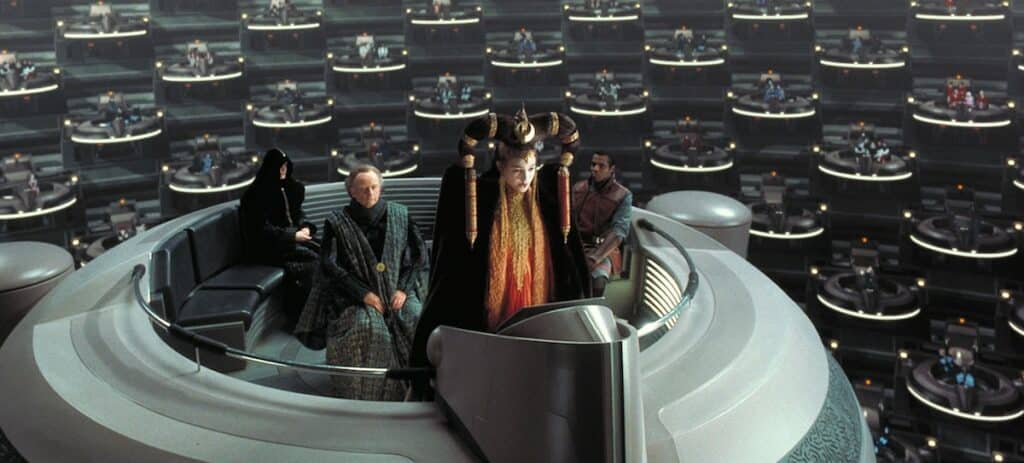
2. Political Processes and Governance
When it comes to political processes in the Star Wars Galactic Senate, it’s safe to say that bureaucracy is the real villain in the galaxy. Forget Darth Vader or Darth Sidious—slow legislative procedures and endless debates are what truly brought the Republic to its knees. While senators and representatives from all across the galaxy debated important issues like trade routes, war, and taxation, much of the time it felt like watching an entire galactic courtroom arguing over whose hoverpod was parked in the wrong spot. So, let’s break down how the wheels of governance (eventually) turned in this enormous political machine.
Legislative Procedures: Podracing, But Slower
Introducing a bill in the Galactic Senate is about as fast as getting a Bantha to jump. Imagine this: a senator stands up in their fancy floating pod, makes a long-winded speech about a pressing issue (like how some greedy megacorp is stealing water from moisture farmers on Tatooine), and then submits a proposal. Great, right? Well, hold onto your podracers, because it can take months—or even years—for the Senate to pass any real legislation.
Once a bill is proposed, it’s sent to committees and subcommittees for “review.” And by review, we mean endless debates, re-writes, and amendments that might make you want to jump into hyperspace just to get away from the paperwork. There’s even a chance it could be outright vetoed before it gets anywhere near a vote. Senators might as well bring a pillow to these sessions—because they drag on longer than the Kessel Run if you’re not Han Solo.
Bills go through multiple rounds of voting, amendments, and sometimes disappear into a bureaucratic black hole. It’s no wonder the galaxy was falling apart by the time Episode II rolled around. Even when action was desperately needed (looking at you, Separatist crisis), the Senate’s ability to act decisively was about as likely as Jabba the Hutt becoming a vegetarian.
Committees and Subcommittees: The Galactic Paper Shufflers
Ah, committees and subcommittees—the bread and butter of the Galactic Senate’s inefficiency. If you thought one governing body was slow, wait until you see what happens when you divide it into smaller groups, each responsible for “specializing” in an area. Think of it like dividing up a Star Destroyer’s crew into tiny groups to handle specific tasks. One committee might be responsible for trade, another for security, and another for regulating the droid oil industry. And just like that, no one can seem to agree on anything.
The committees review bills, call witnesses (sometimes Jedi, sometimes sleazy Trade Federation officials), and hold investigations. It sounds impressive, but in reality, it’s often more talk than action. A senator with an urgent issue—say, fighting off pirates on a distant planet—might find their proposal sent to a committee where it could get bogged down for months while they debate the “ethical implications” of fighting pirates. The pirates, meanwhile, are having a great time.
Subcommittees? Even worse. They’re the places where already slow processes go to hibernate. The endless back-and-forth, revisions, and bureaucratic posturing mean that by the time anything actionable comes out, the original problem might already have exploded into a full-blown galactic crisis.
Decision-Making Mechanisms: Majority Rule, Sort Of
Once a bill makes it through the maze of committees, it’s time for the Senate to vote. This is where things get interesting. In most cases, the Senate operates on a majority rule system, which seems simple enough—get more than half the senators to agree, and the bill passes. But with so many different species, planets, and interests at play, getting a majority vote isn’t as easy as it sounds.
Some votes require a supermajority, especially for major decisions like declaring war or electing a new Supreme Chancellor. For these, things can get even trickier, with senators from powerful systems like Coruscant and Naboo wielding considerable influence. There’s also the fun political maneuvering—alliances, backroom deals, and, of course, good old-fashioned bribery—that tends to influence who votes for what.
Emergency Powers and Executive Orders: Palpatine’s Sneaky Toolset
This is where things get really spicy. In times of crisis, the Senate can grant the Supreme Chancellor “emergency powers.” These powers allow the Chancellor to make decisions and pass laws without the usual Senate approval. It’s meant to speed things up in a crisis, but we all know how that worked out when Palpatine took full advantage.
Palpatine’s use of emergency powers is a textbook lesson in how good intentions can go awry—he uses fear (hello, Clone Wars!) and constant crises to extend and expand his authority. What started as a temporary measure to deal with the Separatists quickly snowballed into a dictatorship with the Senate barely batting an eye. And by the time anyone realized what was happening, Palpatine had already morphed into Emperor Palpatine, leaving the Senate as little more than a decorative institution.
The Role of the Supreme Chancellor: Galactic President or Space Tyrant?
The Supreme Chancellor is the Senate’s head honcho, sort of like a galactic president but with even more power (and often, better robes). The Chancellor is elected by the Senate and is supposed to represent the interests of the entire Republic. In theory, they work alongside the Senate to maintain peace, negotiate treaties, and keep the galaxy from imploding. In practice, though, the role is a political minefield.
Chancellors have a lot of influence—too much, some might argue—and during Palpatine’s rise to power, we see just how dangerous that can be. The election of a Chancellor is typically a civil process (minus the occasional assassination attempt), but once in office, the Chancellor has the ability to guide the Republic’s overall strategy. This includes military actions, diplomatic initiatives, and, in extreme cases, declaring martial law.
Palpatine, of course, shows us how even the most trusted officials can exploit their position for power. He plays the Senate like a fiddle, manipulating events to justify his increasing control. Under his leadership, the Chancellor’s role shifts from being a cooperative leader to an authoritarian ruler, and by the time the galaxy realizes what’s happening, the Senate is little more than a rubber stamp for his decrees.
The Election of the Chancellor: Where Democracy Takes a Holiday
While the Senate can vote for a new Supreme Chancellor, these elections are often where the wheels fall off the democratic wagon. Take Valorum’s ousting as an example—it wasn’t because of poor leadership (though, to be fair, he wasn’t exactly winning over the Senate), but because of a perfectly timed vote of no confidence led by none other than Palpatine. The man had a way of making things go his way, and this was no exception.
Once elected, Chancellors usually serve long terms, with the option for re-election. But, as we’ve seen, the role is less about being a mediator and more about navigating the ever-turbulent waters of galactic politics. By the time of the Clone Wars, the election of a Chancellor feels more like a chess game than a democratic process. And if there’s one thing we learned from Palpatine’s career, it’s that playing the long game in politics tends to end in Emperor status.
Conclusion: A Galaxy Governed… Kind Of
In theory, the political processes of the Galactic Senate should’ve kept the Republic functioning smoothly—laws were passed, crises were averted, and leaders were chosen with the people’s best interests in mind. In reality, the Senate was a bureaucratic quagmire, where decisions took forever, political favors reigned supreme, and backroom deals were just another day at the office. Throw in the manipulation of Sith Lords, and it’s no surprise that the Senate fell victim to power-hungry individuals like Palpatine.
While the idea of democracy survived in the Senate’s framework, its execution left much to be desired. At the end of the day, political processes in the Galactic Senate were like trying to fix a broken hyperdrive with duct tape: not the best approach when the galaxy’s survival is on the line.
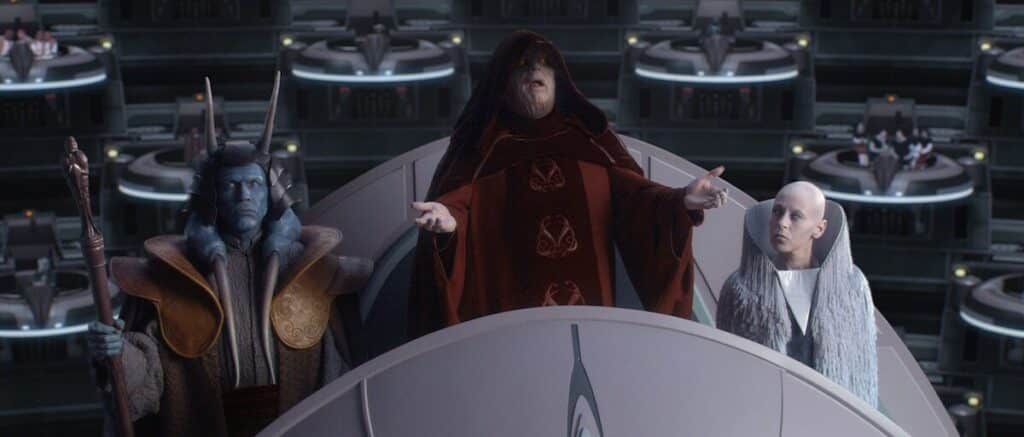
3. Themes of Corruption and Manipulation
When it comes to corruption and manipulation in the Star Wars universe, the Galactic Senate could teach a masterclass on how to run an ethically questionable political system. It’s not just about dark-side conspiracies or Sith Lords pulling the strings (though, let’s face it, Palpatine is the gold standard of manipulation). Corruption runs deep in the Senate, and by the time the prequels roll around, the Republic is practically on life support because of it. Buckle up as we explore how the Galactic Senate became less of a democracy and more of a playground for power-hungry politicians, corporations, and a certain sneaky Sith Lord.
Palpatine’s Ascendancy: Sith Lord of Sneaky Politics
Let’s not beat around the bush here: Palpatine didn’t just rise to power by luck. He had a plan—one that involved manipulating the Galactic Senate in ways so subtle and devious that by the time anyone realized what was happening, the Republic was already on the verge of becoming the Galactic Empire.
Palpatine’s political journey begins as a relatively unassuming senator from Naboo. His charm, coupled with a seemingly genuine desire to serve, made him a likable figure in the Senate. But behind the scenes, he was playing a much darker game. Using the ongoing trade disputes and rising tensions in the galaxy to his advantage, Palpatine slowly planted the seeds of distrust and division.
The key to Palpatine’s success was his ability to manipulate crises. He orchestrated the Naboo blockade in The Phantom Menace, turning a local dispute into a galactic catastrophe that ultimately led to the removal of Chancellor Valorum. By engineering the downfall of the sitting Chancellor, Palpatine positioned himself as the “logical” choice for the job. It was like watching someone orchestrate an elaborate game of dejarik (the holographic chess-like game) while pretending not to know the rules.
Once in power, Palpatine wasted no time expanding his influence. As the Clone Wars began, he cleverly used fear and chaos to consolidate his hold on the Senate. Each new crisis granted him more emergency powers, which he used to bypass the slow-moving legislative process. And, in typical Sith Lord fashion, Palpatine turned these temporary powers into permanent ones, becoming the very dictator the Republic had been trying to avoid.
Political Corruption: Buying Votes and Influencing Senators
Corruption wasn’t just a top-down issue in the Senate. Many senators had their own agendas, and not all of them were noble. Corporate interests, like those of the Trade Federation, Banking Clan, and Techno Union, had a significant influence over senators, often swaying votes and decisions through bribes, blackmail, and good old-fashioned coercion.
Take the Trade Federation, for example. They weren’t just the galaxy’s shipping moguls—they were also major players in the Senate, using their wealth and resources to influence policy decisions. Remember the blockade of Naboo? That wasn’t just a trade dispute; it was a power play by the Trade Federation to gain more influence in the Senate, even if it meant holding an entire planet hostage.
Corruption also took subtler forms, such as senators being influenced by lobbyists. The galaxy had no shortage of special interest groups vying for power, wealth, and control over key resources like spice or trade routes. Some senators were outright bought by these corporations, turning the Senate chamber into more of a marketplace for favors than a forum for governing.
The result? Policies that often favored the rich and powerful at the expense of the smaller, less influential systems. If you were a senator from a backwater planet with no significant resources to offer, good luck getting your voice heard. The big players—like the Trade Federation, InterGalactic Banking Clan, and others—dominated the Senate floor, pushing their own agendas while the galaxy slowly spiraled into chaos.
Influence of External Entities: When Corporations Become Politicians
Speaking of corporate interests, Star Wars does a stellar job of showing us what happens when businesses get a little too cozy with politics. From the Trade Federation’s influence to the Separatist-aligned Techno Union, the line between politics and corporate power in the Republic is blurrier than a Tatooine sandstorm.
These corporations didn’t just donate credits to political campaigns; they had a seat at the table—literally. Some corporate leaders even served as senators, representing their own interests rather than those of their star systems. It’s like if Amazon or Apple had their own congressional seats in the U.S. Senate, passing laws that conveniently made it easier for them to rake in profits.
This corporate influence reached its peak during the Clone Wars, as several of these entities openly joined the Separatists in a bid for independence. In doing so, they weaponized their vast resources and droid armies, fueling the galaxy-wide conflict while also pushing for policies that benefited their financial bottom lines.
Palpatine’s Master Stroke: Using Fear to Consolidate Power
One of the most sinister aspects of Palpatine’s manipulation of the Senate was his use of fear. The rise of the Separatists, the threat of assassination attempts, and the chaos of the Clone Wars all provided Palpatine with the perfect storm to justify his authoritarian measures.
At every turn, Palpatine positioned himself as the one person who could protect the Republic from these external threats. He framed his increasing control as necessary for the survival of the galaxy, and the Senate bought it hook, line, and sinker. Fear became the currency with which Palpatine traded, allowing him to build a dictatorship out of the very democratic system that was supposed to prevent such a thing from happening.
The culmination of his manipulation came when he was granted emergency powers, a move that effectively gave him carte blanche to rule the Republic as he saw fit. While this initially seemed like a temporary measure to protect the galaxy from the Separatists, Palpatine had no intention of relinquishing these powers. His reign as Emperor was sealed the moment the Senate handed him unchecked authority.
Political Corruption and the Republic’s Downfall
By the time Palpatine officially declared himself Emperor, the Galactic Senate had been so corrupted that it barely functioned as a legislative body. What was once a symbol of galactic unity and democracy had become a hollow institution, filled with senators who either turned a blind eye to corruption or actively participated in it.
Palpatine’s genius was his ability to corrupt the system from within, using the Senate’s existing flaws to turn democracy into dictatorship. He didn’t need to overthrow the government by force—he simply exploited its weaknesses until there was nothing left but a façade of democracy, with himself at the center.
Corruption in the Senate wasn’t just about bribes or under-the-table deals. It was systemic, rooted in the very structure of the Republic itself. From corporate influence to political manipulation, the Republic’s downfall was inevitable because the system had become so deeply compromised.
Conclusion: A Galaxy Built on Manipulation
In the end, the Galactic Senate’s corruption wasn’t just a problem for a few wayward senators; it was the reason the Republic fell. Palpatine’s rise to power was the ultimate expression of how deeply flawed the system had become. Through fear, bribery, manipulation, and corporate influence, the Senate went from a body meant to represent the people to a tool for those who sought personal gain.
Palpatine may have been the mastermind behind the Republic’s transformation into the Empire, but he didn’t do it alone. Corruption was woven into the fabric of the Senate, and by the time the Jedi realized what was happening, it was already too late. In the end, the Galactic Senate serves as a warning—one that reminds us that democracy is only as strong as the people who uphold it, and that power, once corrupted, is incredibly difficult to reclaim.
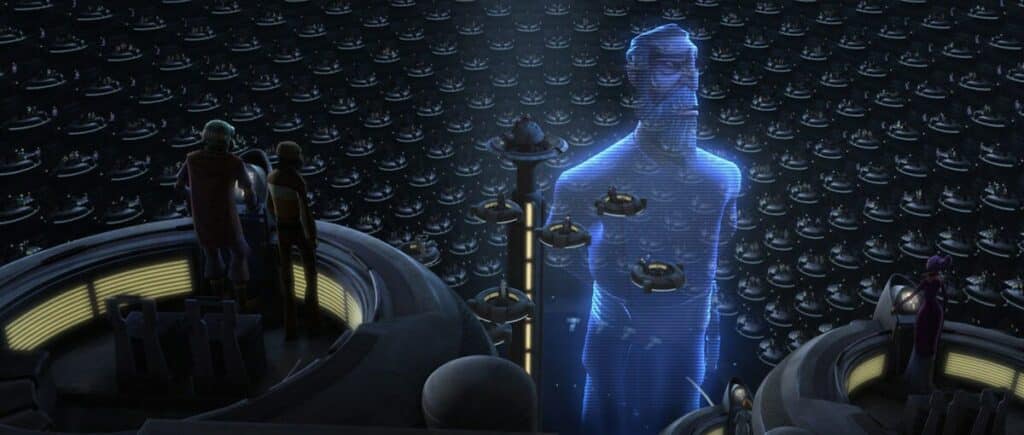
4. Depiction of Bureaucracy and Inefficiency
If the Star Wars Galactic Senate were a vehicle, it would be a rusted-out speeder sputtering through a Coruscant traffic jam. From its slow legislative processes to its tangled web of red tape, the Senate’s depiction of bureaucracy and inefficiency is enough to make anyone want to jump to hyperspace just to escape the madness. While the Star Wars universe is known for its epic space battles and mystical Force-wielding heroes, the true villain might just be the bureaucratic nightmare that grinds the galaxy’s government to a halt.
Slow Legislative Processes: Speed Is Not the Senate’s Strong Suit
The Senate’s legislative process is like trying to win a podrace in a broken-down podracer—it might move, but it’s going to be slow and painful. In theory, the Senate is supposed to be where laws are proposed, debated, and passed to keep the galaxy running smoothly. In reality, it’s a lot more like watching a slow-motion duel where both sides are too busy arguing over the rules to actually pick up their lightsabers.
Bills and motions, even ones addressing urgent galactic crises, are subjected to endless rounds of debate, amendments, and procedural hurdles. Take, for example, the Trade Federation’s blockade of Naboo in The Phantom Menace. While the planet is literally under siege, the Senate spends its time debating the legality of the blockade instead of actually doing something about it. By the time they decide to send a commission to investigate, Queen Amidala has had enough and calls for a vote of no confidence in Chancellor Valorum. And who can blame her? When your home planet is being starved out, “sending a committee” isn’t exactly the heroic rescue you’re hoping for.
This glacial pace of decision-making is a recurring theme throughout the prequel trilogy. Even as the galaxy edges closer to war, the Senate dithers. They spend so much time arguing over the finer points of trade disputes, taxation, and whether or not to fund a clone army that by the time they make a decision, the galaxy is already on fire. It’s like watching the galactic equivalent of a city council trying to approve pothole repairs while the Death Star looms in the background.
Committees and Subcommittees: Where Bills Go to Die
One of the reasons the Senate is so slow is the labyrinth of committees and subcommittees that govern the legislative process. Every issue—whether it’s about galactic security, interplanetary trade, or the rights of droids—has its own committee. These committees are supposed to streamline the decision-making process by dividing the workload. In practice, they do the opposite.
Committees are where bills go to be endlessly debated, revised, and amended, often to the point where the original issue gets lost in a sea of political posturing. It’s like trying to have a productive conversation in a cantina full of arguing bounty hunters—nothing gets resolved, and everyone leaves frustrated. By the time a bill actually makes it out of committee, it’s usually so watered down that it barely resembles its original intent.
Subcommittees are even worse. They take the inefficiencies of committees and dial them up to eleven. These smaller, specialized groups are supposed to focus on niche issues, but they end up being the perfect place for senators to bicker over details and stall legislation indefinitely. It’s no wonder the galaxy was on the brink of collapse when even something as important as defending planets from Separatist attacks had to go through endless rounds of committee review.
Red Tape and Administrative Hurdles: A Galactic-Sized Nightmare
If you thought Earth bureaucracy was bad, wait until you get a glimpse of the Galactic Senate’s red tape. For every decision the Senate tries to make, there’s a mountain of paperwork, regulations, and administrative hurdles standing in the way. Need to allocate resources for disaster relief? Better hope you filled out Form 372B in triplicate and got it signed by the appropriate subcommittee chairperson. Want to pass legislation to protect the Outer Rim territories? Well, first you’ll need to go through five different committees, hold three public hearings, and get approval from the Grand Administrative Council of Galactic Procedures.
This over-complication of simple tasks creates a system where even the most pressing issues get bogged down in endless delays. Take the Military Creation Act in Attack of the Clones, which called for the creation of a clone army to defend the Republic. Rather than swiftly addressing the growing threat of the Separatists, the Senate spent months arguing over whether or not the act was necessary, while the galaxy teetered on the brink of civil war. By the time the act was passed, the Republic was already fighting a full-blown conflict.
The endless administrative hurdles make it almost impossible for the Senate to respond to crises in a timely manner. Whether it’s a natural disaster, a planetary invasion, or a coup, the Senate’s response is usually delayed by layers of bureaucracy. This inefficiency is a key factor in the Republic’s eventual downfall, as it leaves the galaxy vulnerable to manipulation by those who can act quickly—like a certain Sith Lord with a penchant for emergency powers.
Frustration in the Ranks: Even the Jedi Get Tired of the Senate
It’s not just the senators who are frustrated by the Senate’s inefficiency—plenty of characters throughout Star Wars voice their annoyance at the glacial pace of the legislative process. Perhaps no one is more vocal about it than Padmé Amidala, the senator from Naboo. Throughout the prequel trilogy, she’s seen advocating for peace, diplomacy, and decisive action, only to be met with bureaucratic delays and indecision.
In Attack of the Clones, Padmé is nearly assassinated, yet the Senate continues to debate the seriousness of the Separatist threat. It’s only after she’s nearly killed that they decide, “Hey, maybe we should do something about this.” Her frustration is palpable, and it’s easy to see why she becomes so disillusioned with the political system.
The Jedi, too, find themselves hampered by the Senate’s inefficiency. In Revenge of the Sith, Mace Windu expresses frustration over the Senate’s inability to act decisively, especially as Palpatine tightens his grip on power. The Jedi, who serve as peacekeepers and protectors of the Republic, are often forced to navigate the Senate’s bureaucracy just to carry out their missions. It’s no wonder they’re constantly frustrated—imagine trying to stop a galactic war while waiting for Senate approval to leave Coruscant.
Bureaucracy as a Tool of Manipulation
While the Senate’s inefficiency is often portrayed as a result of its massive size and complexity, it’s also deliberately manipulated by those who stand to gain from its dysfunction. Palpatine, ever the puppet master, uses the Senate’s bureaucracy to his advantage. He knows that the slower the Senate moves, the easier it is for him to consolidate power behind the scenes.
Palpatine leverages the Senate’s inefficiency to create a sense of urgency and fear. By manipulating the bureaucracy, he can stall certain decisions, force others through more quickly, and make it appear as though only he has the ability to cut through the red tape. His requests for emergency powers, framed as necessary to bypass the Senate’s sluggishness, are a direct result of his exploitation of the system’s inherent inefficiencies.
In essence, Palpatine turns the Senate’s own processes against it, using bureaucracy as a weapon to undermine democracy. It’s a brilliant strategy, one that allows him to rise to power without ever needing to stage a traditional coup. By the time the Senate realizes what’s happening, it’s too late—the Emperor has already emerged from the shadows.
Conclusion: A Galaxy Stuck in Paperwork
The depiction of bureaucracy and inefficiency in the Galactic Senate is both a cautionary tale and a source of frustration for anyone watching Star Wars. While the idea of a democratic governing body representing thousands of star systems sounds noble, the reality is far messier. Slow legislative processes, endless committees, and administrative red tape make it nearly impossible for the Senate to function effectively, leaving the galaxy vulnerable to manipulation and exploitation.
In the end, the Senate’s inefficiency isn’t just an annoying subplot—it’s a key factor in the Republic’s fall. The very systems designed to ensure fairness and representation end up being the same ones that allow Palpatine to seize power, showing us that bureaucracy, when left unchecked, can be as dangerous as any Sith Lord.
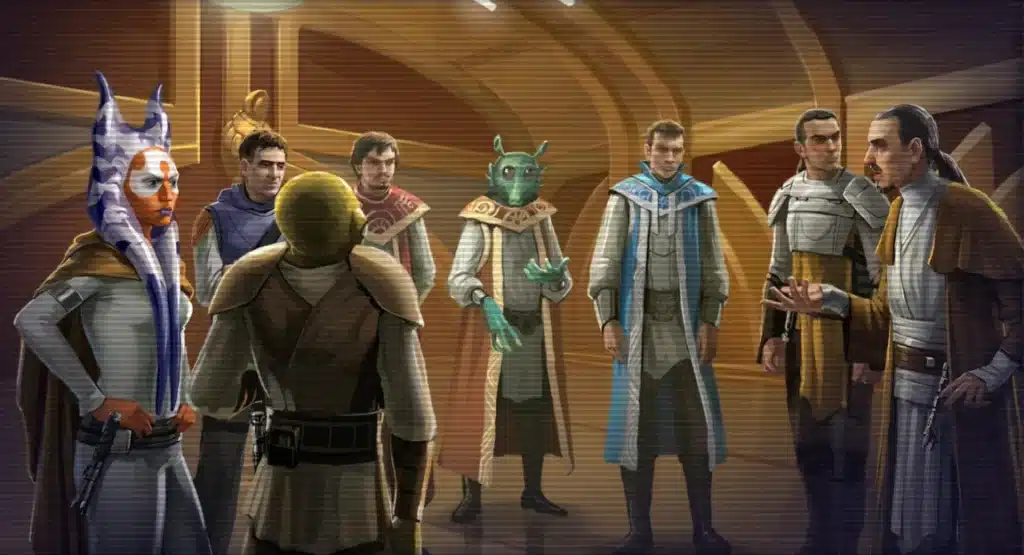
5. Representation and Diversity
In a galaxy as vast and diverse as the Star Wars universe, the Galactic Senate had the monumental task of representing countless star systems, species, and cultures. It was like a massive intergalactic dinner party where every guest came from a different planet and brought their own customs, ideologies, and sometimes… tentacles. From Wookiees to Rodians, the Senate chamber was a kaleidoscope of different beings, each representing the interests of their homeworld. But while the Senate is often seen as a symbol of diversity and unity, the reality of representation was far more complicated.
Species and Cultural Representation: The Galactic Melting Pot
One of the most striking aspects of the Galactic Senate was the sheer diversity of species present. This wasn’t just a group of Humans in fancy robes debating galactic policy—it was a colorful (sometimes literally) assembly of thousands of unique species from across the galaxy. Whether it was the proud, honorable Wookiees, the sly Twi’leks, or the stoic Mon Calamari, each species brought their own perspective to the Senate floor.
And it wasn’t just about looks—each species had its own culture, history, and unique set of challenges. For instance, the Gungans of Naboo, though technologically inferior to many other species, had a deep respect for the natural world, while the Neimoidians were known for their cutthroat business practices (a reputation bolstered by their role in the Trade Federation). The diversity in species meant that debates in the Senate weren’t just about legislation—they were about the clashing and blending of different cultures and values.
But while the Senate certainly looked diverse on the surface, not all species were equally represented. Some races, particularly those from more economically and politically powerful systems like Coruscant or Corellia, wielded far more influence than those from less developed Outer Rim territories. The result? A Senate that, despite its diversity, often favored the interests of the galaxy’s elite at the expense of its marginalized populations.
The Power of Core Worlds vs. Outer Rim Systems
The galaxy in Star Wars is broadly divided between the Core Worlds—wealthy, powerful systems like Coruscant, Alderaan, and Naboo—and the Outer Rim Territories, which include backwater planets like Tatooine. While senators from all regions were technically given equal footing, the reality was that representatives from Core Worlds often held far more sway.
For planets like Coruscant, which was not only the capital but also a hub of trade, culture, and politics, their influence in the Senate was immense. These wealthy systems had the resources and political connections to push their agendas, making sure their voices were heard loud and clear in the Senate. It’s no surprise that Coruscant, for instance, managed to become the seat of the entire Republic.
In contrast, representatives from Outer Rim planets were often drowned out. Planets like Tatooine, with its sparse population and lack of political clout, struggled to get the attention they needed. These planets were frequently left out of important decisions or found their needs pushed to the bottom of the Senate’s priority list. This imbalance of power created tension, particularly during times of galactic crisis. The disparity in representation meant that poorer systems were often left vulnerable, their needs ignored while the Core Worlds focused on maintaining their own prosperity.
This inequality also sowed the seeds of unrest that eventually led to the rise of the Separatists. Many Outer Rim systems, feeling neglected by the Republic and the Senate, saw little reason to remain loyal to a government that did nothing for them. The Senate’s inability to fairly represent all its member systems was one of the many factors that led to the galactic conflict that became the Clone Wars.
Equal Representation vs. Proportional Representation: A Galactic Debate
In a galaxy filled with planets of all shapes, sizes, and population densities, one of the biggest questions the Senate faced was how to balance representation. Should every planet, no matter how small, have an equal say in Senate decisions? Or should more populous and influential systems have a larger share of the power? It’s the same argument you’d find on Earth, except with lightsabers and starships thrown into the mix.
In theory, the Senate offered equal representation for all systems, meaning that a senator from a tiny agricultural planet had just as much right to speak as one from a sprawling urban world like Coruscant. However, in practice, the most populous and resource-rich planets often dominated the conversation. This is especially true for systems with major economic or political clout—places like Alderaan and Naboo, which had powerful leaders like Padmé Amidala who could rally others to their cause.
For smaller planets, especially those in the Outer Rim, equal representation was more of a pipe dream. Sure, they technically had a voice, but their influence in the Senate chamber was dwarfed by the sheer power of the Core Worlds. The result was a system where the big players had the loudest voices, and the smaller systems were left to fend for themselves.
This imbalance created a sense of frustration and resentment among the less influential planets, who felt that their needs and concerns were constantly being overlooked. It’s one of the reasons why so many Outer Rim systems decided to join the Separatists—they felt that the Senate, as it stood, was no longer serving their interests.
Marginalization of Certain Groups: The Hutt Problem
Of course, not every group in the galaxy was interested in playing by the Senate’s rules. The Hutt Cartel, for example, operated completely outside of the Republic’s legal framework. Hutts, like Jabba, ran criminal empires that spanned the galaxy, and while they weren’t officially represented in the Senate, their influence could still be felt through bribery and corruption. After all, when you control entire planets through your criminal enterprises, you don’t need a Senate seat to get things done.
But the marginalization of certain groups wasn’t limited to criminals. Some species were systematically overlooked or exploited by the Senate. The Wookiees, for example, had a rich culture and a proud warrior tradition, but their planet Kashyyyk was often at the mercy of political decisions made by faraway senators who had little understanding of Wookiee society. Even more egregious was the treatment of planets like Ryloth, home of the Twi’leks, which suffered under economic exploitation and political marginalization.
The problem wasn’t just that these groups lacked representation—it was that the Senate, as an institution, often failed to see the value of diversity. While the Senate chamber may have looked like a celebration of galactic unity, the reality was that many of these species were marginalized, their voices drowned out by the more powerful players in the galaxy.
Cultural Differences and Political Stances
The diversity of species in the Senate wasn’t just about appearances—it also shaped the political debates that took place. Different species brought different values, traditions, and philosophies to the table, which often influenced their stance on key issues. For example, the pacifist Mon Calamari were strong advocates for peace and diplomacy, while the militaristic Mandalorians (at least in their heyday) were far more inclined to take an aggressive stance on galactic security.
These cultural differences sometimes led to clashes in the Senate chamber, as representatives from vastly different worlds struggled to find common ground. It’s hard to get consensus on issues like trade, defense, and taxation when one senator is arguing from the perspective of a peaceful ocean-dwelling species and another is thinking like a battle-hardened warrior.
But it wasn’t all conflict. There were also moments of collaboration, where species from completely different backgrounds found ways to work together for the greater good. These moments of unity were rare, but when they happened, they showed the true potential of the Senate as a force for peace and cooperation.
Conclusion: The Strength and Weakness of Galactic Diversity
In the end, the Galactic Senate’s representation of the galaxy’s many species and cultures was both its greatest strength and its greatest weakness. On one hand, the sheer diversity of the Senate showcased the vastness and complexity of the Star Wars universe. On the other hand, the inequalities in representation and the marginalization of certain groups ultimately contributed to the Senate’s downfall.
Diversity, while valuable, also brought with it challenges—especially when combined with the Senate’s slow-moving bureaucracy and inefficiency. The Senate’s failure to balance the needs of its many member systems left a vacuum that power-hungry forces like Palpatine were all too eager to fill. In the end, the story of representation in the Senate is one of both promise and failure, a cautionary tale about the difficulties of governing a galaxy as large and complex as this one.
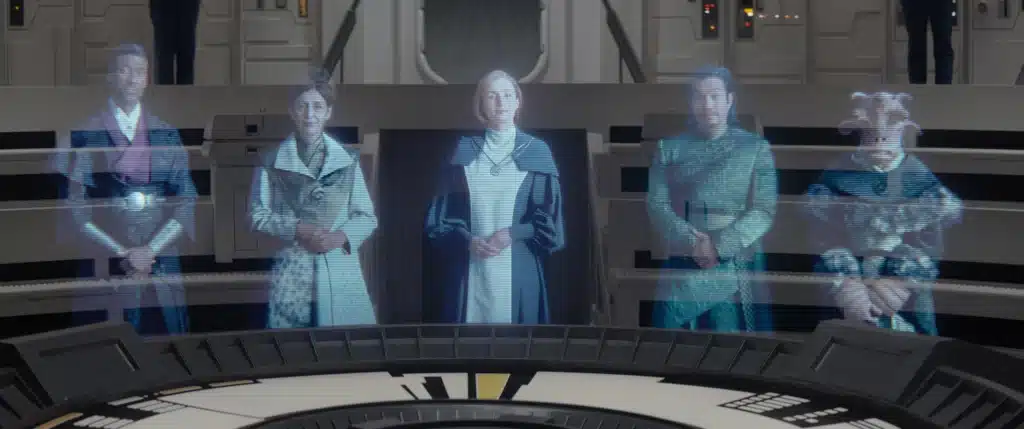
6. Political Intrigue and Alliances
The Galactic Senate, while ostensibly a governing body focused on keeping the peace across the galaxy, often operated more like a stage for political intrigue, secret alliances, and backroom deals. Behind the grand speeches and legislative debates, senators were constantly forming alliances, plotting against rivals, and maneuvering to gain more power and influence. If you thought the Jedi vs. Sith dynamic was complicated, the web of political intrigue in the Senate makes even the most convoluted lightsaber duel look straightforward.
Factions Within the Senate: Political Blocs and Power Plays
The Galactic Senate was far from a unified body. Instead, it was composed of various political factions, each representing different interests, ideologies, and star systems. Some factions supported the centralization of power within the Republic, while others, particularly those from the Outer Rim, advocated for greater autonomy and decentralization. These blocs didn’t just form around common political goals—they were also influenced by personal ambitions and rivalries. It’s like high school cliques, but with the fate of the galaxy hanging in the balance.
At the heart of the Senate’s political divisions were key factions like the Loyalists, who supported the central government and the Supreme Chancellor, and the Reformists, who sought to reduce the Chancellor’s power and increase transparency. Within these groups, senators formed alliances based on common interests, shared enemies, and, sometimes, straight-up convenience.
For example, during the Clone Wars, many senators rallied behind the leadership of Bail Organa and Mon Mothma, who pushed for peace and diplomatic solutions. On the other side, senators like Orn Free Taa of Ryloth supported Palpatine’s increasingly authoritarian measures, believing that strong central control was the only way to maintain order in the galaxy. These factions weren’t always cut-and-dry, and allegiances shifted as the political landscape changed.
Secret Alliances: Deals Done in the Shadows
While public alliances were common, many of the Senate’s most important deals were struck in private. Senators often met behind closed doors to form secret alliances, trade favors, or make deals that would never see the light of day. These backroom negotiations were the lifeblood of the Senate’s political system, where influence and power were bartered like commodities.
A prime example of this secretive dealing is the relationship between Senator Palpatine and various senators who, either knowingly or unknowingly, helped him rise to power. While Palpatine presented himself as a humble public servant, he was masterfully pulling strings behind the scenes. Through quiet promises, well-timed bribes, and subtle threats, he built a network of supporters who helped him consolidate power in the Senate. It was all very cloak-and-dagger, with just a hint of the Sith.
Senators like Mas Amedda, Vice Chair of the Senate, and Sly Moore, Palpatine’s mysterious personal aide, played key roles in his secretive maneuvering. These individuals didn’t need to be in the spotlight to have tremendous influence—they operated from the shadows, ensuring that Palpatine’s rise to Emperor was as smooth as possible. Other senators, like those aligned with the Trade Federation or the Banking Clan, quietly aligned themselves with the Sith, hoping to profit from Palpatine’s new order.
Espionage and Undercover Dealings: The Senate’s Dirty Little Secret
When you think of espionage in Star Wars, your mind probably jumps to spies like Cassian Andor or bounty hunters like Boba Fett. But in the Galactic Senate, espionage wasn’t limited to the galaxy’s seedy underbelly—it was alive and well in the political arena. Senators often employed spies, informants, and even droids to gather intelligence on their rivals. Sometimes, this information was used to blackmail opponents or sabotage political efforts. Other times, it was simply used to gain a competitive edge in the ever-shifting world of Senate politics.
One of the more prominent examples of espionage in the Senate is the Separatist movement’s infiltration of the Republic. Count Dooku and his agents had operatives within the Senate, feeding them intelligence and swaying votes in favor of Separatist interests. These undercover agents were often well-placed, with access to sensitive information that could be used to further the Separatist cause. The ability to manipulate the Senate from within allowed the Separatists to gain key advantages in the early days of the Clone Wars.
Senators themselves weren’t above using their own resources to dig up dirt on their colleagues. Padmé Amidala, while fiercely committed to peace and justice, was no stranger to the political intrigue of the Senate. In Attack of the Clones, she navigated a web of assassination attempts and conspiracies, working to uncover who was targeting her. Though Padmé was an idealist at heart, she understood that survival in the Senate required some level of political savvy.
Corruption and Coercion: The Senate’s Underbelly
In any political body, corruption is bound to rear its ugly head, and the Galactic Senate was no exception. Senators with powerful backers—like the Trade Federation, the Techno Union, or the Banking Clan—were often susceptible to bribery or coercion. These corporate interests didn’t just lobby for favorable policies; they outright bought senators, ensuring that their voices would carry the most weight in the chamber.
The most glaring example of this is, of course, the Trade Federation itself. With its vast wealth and military power, the Federation had significant influence over the Senate, often getting away with questionable practices like, oh, I don’t know, blockading an entire planet. How does a company manage to pull off such a bold move without facing immediate consequences? Simple—money talks, and the Trade Federation had plenty of it.
Corruption wasn’t limited to corporations, though. Palpatine’s ability to manipulate the Senate also came down to his mastery of exploiting weaknesses. Senators who opposed him often found themselves facing sudden scandals or threats to their political careers. Palpatine didn’t always need to offer bribes—sometimes, a well-placed rumor or a subtle nudge in the right direction was all it took to neutralize an opponent.
The Role of the Jedi: Peacekeepers or Political Pawns?
While the Jedi were often seen as above the political fray, they were inevitably drawn into the Senate’s web of intrigue. As peacekeepers of the Republic, the Jedi worked closely with the Senate, often carrying out diplomatic missions or enforcing Senate decisions. However, as Palpatine’s influence grew, the Jedi found themselves increasingly caught between their duty to the Republic and their suspicion of the political machinations surrounding them.
During the Clone Wars, the Jedi were frequently deployed as military leaders, despite their hesitations about the morality of the conflict. Jedi like Obi-Wan Kenobi and Anakin Skywalker were thrust into the political arena, forced to navigate the Senate’s shifting alliances and power struggles. While the Jedi Order remained committed to their role as defenders of peace, they couldn’t help but feel the pull of politics.
The growing distrust between the Senate and the Jedi Order eventually led to their downfall. Palpatine masterfully turned the Senate against the Jedi, framing them as traitors who sought to overthrow the Republic. By manipulating the political climate, he created the conditions for Order 66, effectively wiping out the Jedi and consolidating his control over the galaxy.
Conclusion: A Galaxy Built on Intrigue
Political intrigue and alliances were the lifeblood of the Galactic Senate, shaping the decisions that led to the Republic’s eventual fall. While the Senate was supposed to be a place where democracy flourished, it often devolved into a battleground for power-hungry politicians, secretive factions, and opportunistic corporations. Behind every vote, speech, and debate, there was a hidden agenda, and alliances shifted like the sands of Tatooine.
In the end, the Senate’s web of intrigue allowed figures like Palpatine to thrive, using manipulation, coercion, and secret deals to undermine the Republic from within. The lessons of the Senate’s political intrigue remind us that even the most well-intentioned institutions can be brought down by those willing to play the long game—and in Star Wars, the long game led to the rise of the Empire.
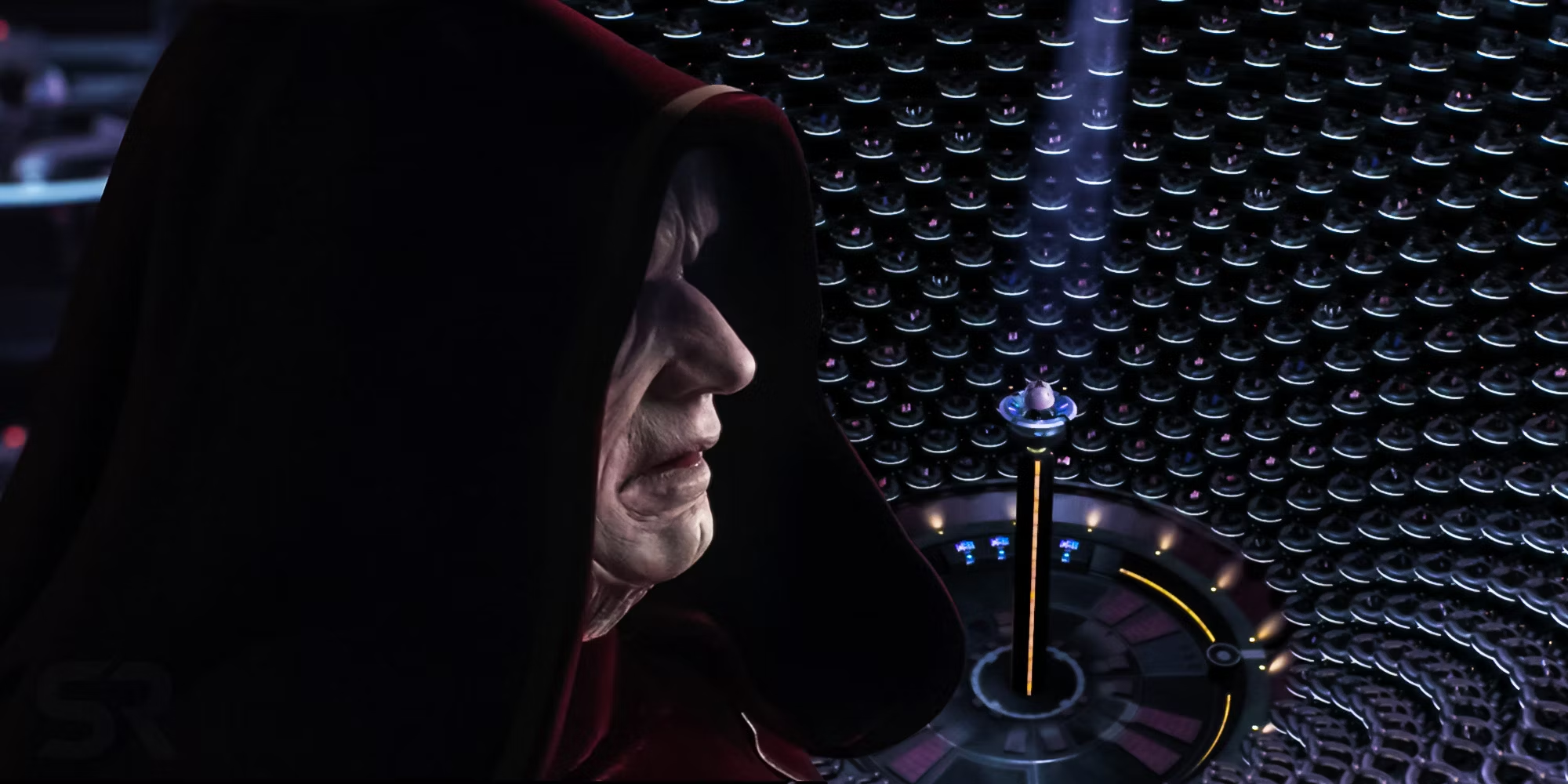
7. The Fall of the Senate and Rise of the Empire
In a galaxy far, far away, the Galactic Senate, once a beacon of democracy and justice, became the stage for one of the greatest political takeovers in cinematic history. The fall of the Senate and the rise of the Empire is not just a tale of lightsabers and space battles; it’s a masterclass in manipulation, fearmongering, and how to legally (and illegally) dismantle a democratic institution. From Palpatine’s political chess game to the tragic failures of the Senate, let’s explore how one of the galaxy’s greatest governing bodies crumbled into the shadow of the Empire.
Critical Turning Points: When Things Started to Go South
If you were to pick the exact moment when the Galactic Senate’s days were numbered, it would be difficult because Palpatine’s rise to power was a long, slow burn. He didn’t just stroll into the Senate and declare, “I’m Emperor now, deal with it!” Instead, he orchestrated a series of critical turning points, each one tightening his grip on the Republic.
One of the most significant moments came with the Trade Federation’s blockade of Naboo in The Phantom Menace. This crisis, which seemed like a simple trade dispute, gave Palpatine the leverage he needed to undermine Chancellor Valorum and position himself as the new Supreme Chancellor. It was a classic political move—create a problem, offer yourself as the solution, and boom, you’re in power.
Next came the Military Creation Act, the pivotal piece of legislation that authorized the creation of the Republic’s Clone Army. This move was born out of fear of the Separatists, who had been gaining power and territory across the galaxy. The Senate, bogged down by bureaucracy and indecision, granted Palpatine more authority to deal with the crisis. This act marked the beginning of the Senate handing over more control to Palpatine, making it easier for him to bend the system to his will.
And then, of course, there was the granting of emergency powers to Palpatine during the Clone Wars. Presented as a temporary measure to deal with the Separatist threat, this move effectively gave him dictatorial control over the Republic. By the time anyone realized what was happening, Palpatine had already transformed the Senate into a puppet institution that existed only to rubber-stamp his decisions.
The Manipulation of Legal Systems: Palpatine’s Master Plan
If there’s one thing Palpatine understood better than anyone, it was the importance of using the system against itself. Rather than staging a violent coup, Palpatine worked within the Senate’s legal framework to accumulate more and more power. He didn’t need to overthrow the Senate with force because the Senate willingly handed him the authority he needed.
Palpatine’s genius lay in his ability to exploit crises for his own gain. Every time the galaxy faced a new threat—whether it was the Trade Federation, the Separatists, or the growing chaos of the Clone Wars—Palpatine presented himself as the only leader capable of resolving the situation. He used fear and uncertainty to convince the Senate that drastic measures were necessary, and they responded by granting him unprecedented control.
Through clever political maneuvering, Palpatine turned the Senate’s own rules and procedures into tools for his rise to power. He manipulated votes, twisted legislation, and ensured that those who opposed him were sidelined or eliminated. By the time the Senate realized what was happening, it was too late to stop him.
Public Perception: The Jedi, the Senate, and the Empire
One of the most fascinating aspects of Palpatine’s rise to power was the way he controlled public perception. While the Senate debated and bickered, Palpatine portrayed himself as a strong, decisive leader. To the citizens of the Republic, he was a beacon of stability in a galaxy descending into chaos. The Senate, on the other hand, looked weak, ineffectual, and mired in bureaucracy.
Palpatine’s masterstroke came when he framed the Jedi as traitors. The Jedi, who had served as guardians of peace for centuries, were suddenly painted as a threat to the Republic’s stability. Through Order 66, Palpatine not only eliminated the Jedi but also shifted public opinion against them. The Senate, fearful of losing control, went along with the narrative, further cementing Palpatine’s control over the galaxy.
The transition from the Republic to the Empire was almost seamless from a public perspective. Palpatine’s propaganda machine worked overtime to convince the galaxy that the new Empire was necessary for peace and security. The Senate, now fully under his thumb, officially declared the Republic dead and welcomed the Empire with open arms, believing that Palpatine’s strong leadership was the only way to restore order.
The Senate as a Puppet Institution: Rubber-Stamping the Empire
By the time Palpatine declared himself Emperor, the Senate had become little more than a ceremonial institution. It still existed in name, but its role in governing the galaxy had been reduced to rubber-stamping Palpatine’s decisions. No longer a forum for debate and diplomacy, the Senate had been neutered by Palpatine’s consolidation of power.
Senators who once had real influence were now powerless, their voices drowned out by Palpatine’s authoritarian rule. Those who supported him, like Mas Amedda, were rewarded with positions of power, while those who opposed him were sidelined or eliminated. The Senate chambers, once filled with passionate debates and political maneuvering, were now silent as senators realized that they no longer had any real authority.
Dissolving the Senate: The Final Nail in the Coffin
The final death blow to the Senate came in A New Hope, when Palpatine dissolved the Senate entirely. By this point, the Empire’s control over the galaxy was absolute, and the Senate was little more than a formality. Palpatine no longer needed to pretend that the Senate had any real influence, and with the Empire’s military might behind him, he officially disbanded the institution.
This moment was significant because it marked the end of the Republic as a political entity. The Senate, once the heart of galactic democracy, was now nothing more than a footnote in the history books. Palpatine’s Empire had fully replaced the Republic, and there was no longer any need for even the illusion of democracy.
In one of the coldest moves in the Star Wars saga, Palpatine dissolved the Senate without so much as a flicker of opposition. The senators who had once wielded power over the galaxy were now nothing more than relics of a bygone era, replaced by regional governors and the brutal efficiency of the Empire’s military.
Conclusion: From Democracy to Dictatorship
The fall of the Senate and the rise of the Empire is a powerful narrative of how a democracy can be dismantled from within. Palpatine’s manipulation of the Senate, his exploitation of fear, and his ability to play the long game turned the galaxy’s greatest democratic institution into a mere puppet for his ambitions. By the time the Senate realized what had happened, it was already too late—the Empire had risen, and the days of the Republic were over.
This story is a cautionary tale, not just for the galaxy far, far away but for any democracy. It shows how easily a system can be corrupted when fear and uncertainty take hold, and how even the most well-meaning institutions can become tools of tyranny. The Galactic Senate’s fall wasn’t just the result of one man’s ambition—it was the product of a system that, over time, became too bogged down in bureaucracy, corruption, and fear to see the danger staring it in the face.
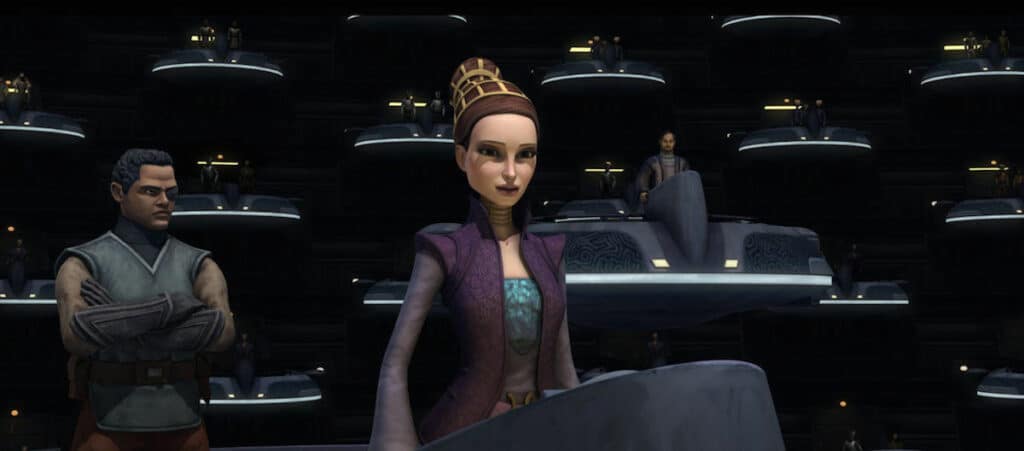
Conclusion: The Galactic Senate’s Political Web and Its Broader Reflection
Throughout the Star Wars saga, the Galactic Senate serves as a microcosm of political dynamics, corruption, and manipulation, laying the groundwork for the rise of the Empire. Every aspect of its political structure—its bureaucracy, representation, diversity, intrigue, and alliances—contributes to the eventual collapse of democracy. The inefficiency of the Senate, the influence of special interests, and the rise of authoritarian power serve as crucial lessons for how fragile political systems can be when greed, fear, and apathy prevail.
The timeless nature of these political struggles in Star Wars mirrors real-world issues, reminding us that the downfall of a republic isn’t just the work of one evil force but often the result of systemic weaknesses and internal discord. Whether it’s the failure to address corruption, the marginalization of diverse voices, or the manipulation of crises to consolidate power, the galaxy far, far away reflects political realities that resonate with contemporary issues on Earth.
At its core, Star Wars is more than just a tale of good versus evil—it’s a reflection on the importance of political participation, awareness, and vigilance. The fall of the Galactic Senate serves as a reminder that democracy is fragile, and it is the responsibility of citizens to remain engaged, informed, and active in protecting the systems that safeguard their freedoms. In a world where political upheaval is as real as the battles between the Jedi and Sith, the lessons of the Galactic Senate encourage us to stay involved and prevent the rise of corruption, manipulation, and authoritarianism in our own societies.


